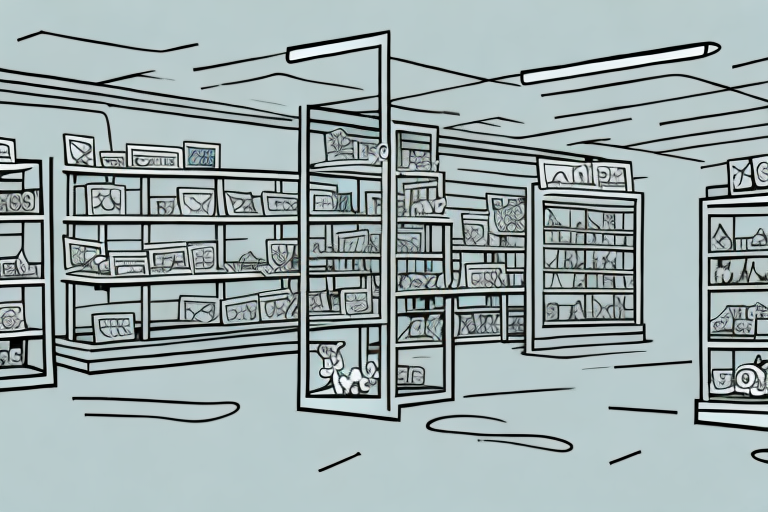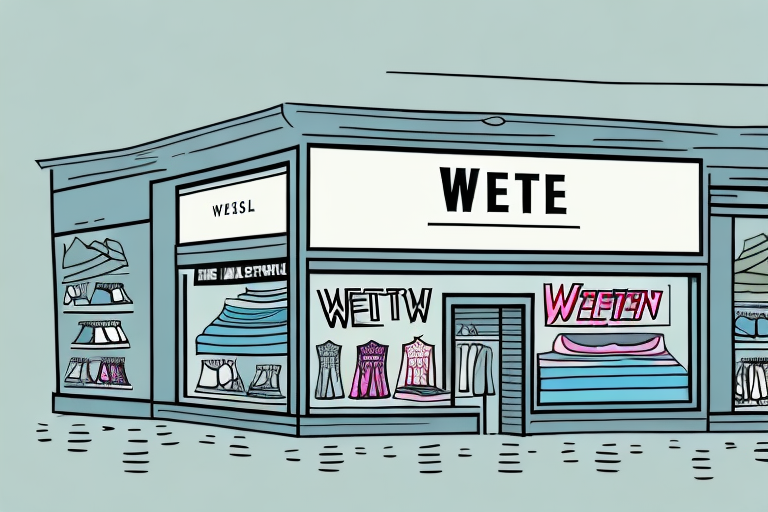The Rise and Fall of Toys ‘R’ Us: A Tale of Success and Bankruptcy
Established in 1948, Toys ‘R’ Us started as a small store in Washington, D.C., specializing in children’s furniture and toys. Over the years, it grew into a global toy retailer, with a peak of 1,691 stores in 38 countries. The brand became synonymous with childhood joy and became an iconic fixture in malls worldwide. Despite its success, Toys ‘R’ Us faced numerous challenges that ultimately led to its downfall and bankruptcy.
One of the key factors contributing to the decline of Toys ‘R’ Us was the rise of e-commerce. As consumers turned to online shopping for convenience and competitive prices, traditional brick-and-mortar retailers like Toys ‘R’ Us struggled to keep pace. The company’s late entry into the digital space and the inability to effectively compete with online giants such as Amazon and Walmart put it at a significant disadvantage.
A Brief History of Toys ‘R’ Us: From Humble Beginnings to Global Dominance
Since its inception, Toys ‘R’ Us fostered a culture of innovation and exceptional customer service. The company’s founder, Charles Lazarus, recognized the potential for a dedicated toy store that offered an extensive selection and knowledgeable staff. This vision propelled the company’s growth, and by the 1980s, Toys ‘R’ Us had become the undisputed leader in the toy retail industry.
During its peak years, Toys ‘R’ Us enjoyed unprecedented dominance in the market. Its large format stores, interactive displays, and unrivaled product selection attracted millions of customers worldwide. Moreover, Toys ‘R’ Us introduced groundbreaking initiatives like the Rewards ‘R’ Us loyalty program, further solidifying its position as the go-to destination for toy shopping.
The Impact of E-commerce on Traditional Toy Retailers like Toys ‘R’ Us
E-commerce revolutionized the retail landscape, offering consumers greater convenience and access to an extensive range of products. Unfortunately, traditional toy retailers like Toys ‘R’ Us were ill-prepared for this seismic shift. As the company struggled to develop a comprehensive online strategy, rivals like Amazon quickly gained a significant market share.
The ease of online shopping and the ability to research products, read reviews, and compare prices without leaving the comfort of home became increasingly attractive to consumers. This shift in consumer behavior significantly impacted the foot traffic and sales at physical toy stores, resulting in declining revenue for Toys ‘R’ Us. The company’s failure to adapt to the rapidly changing retail climate further exacerbated its struggles.
The Toy Industry in Crisis: How Changing Consumer Behavior Led to the Downfall of Toys ‘R’ Us
Consumer behavior played a pivotal role in the demise of Toys ‘R’ Us. As children increasingly turned to digital entertainment such as smartphones, tablets, and video games, demand for traditional toys declined. Coupled with the rise of e-commerce and a shift towards experiences rather than material possessions, Toys ‘R’ Us faced an uphill battle to remain relevant.
The company’s failure to capitalize on emerging toy trends, such as the popularity of collectibles and STEM (Science, Technology, Engineering, and Mathematics) toys, further contributed to its decline. By the time Toys ‘R’ Us attempted to pivot its product offerings and store layouts, it was too little, too late. Changing consumer preferences and a failure to adapt ultimately sealed its fate.
The Demise of Toys ‘R’ Us: Factors Contributing to its Bankruptcy
Multiple factors played a role in Toys ‘R’ Us’s bankruptcy. In addition to e-commerce and changing consumer behavior, the company faced a heavy debt burden. In 2005, Toys ‘R’ Us was acquired by a consortium of private equity firms in a leveraged buyout, resulting in a significant increase in debt.
The interest payments on this debt placed immense pressure on the company’s finances, limiting its ability to invest in innovation and compete effectively. The need to service this debt also hindered its ability to respond quickly to market changes and invest in e-commerce infrastructure. Ultimately, the weight of its financial obligations became insurmountable and forced Toys ‘R’ Us to declare bankruptcy in 2017.
Exploring the Financial Challenges Faced by Toys ‘R’ Us Leading Up to its Closure
The financial challenges faced by Toys ‘R’ Us were multi-faceted. In addition to the debt incurred from the leveraged buyout, the company struggled with declining sales and rising operating costs. Toys ‘R’ Us operated on low-profit margins due to intense competition and frequent price wars with competitors.
Moreover, the company faced difficulties in adapting to changes in supplier relationships and inventory management. As toy manufacturers increasingly turned to direct-to-consumer sales and online distribution channels, Toys ‘R’ Us lost negotiation power and faced margin pressures. These financial challenges created a perfect storm that ultimately led to the closure of Toys ‘R’ Us stores worldwide.
How Toys ‘R’ Us Failed to Adapt and Innovate in the Changing Retail Landscape
Toys ‘R’ Us’s failure to adapt and innovate was a key driver of its demise. Despite early investments in e-commerce, the company lagged behind its competitors in developing a robust online presence. The overall shopping experience in Toys ‘R’ Us stores also failed to evolve, making it less appealing to modern consumers who sought interactive and immersive retail experiences.
Additionally, the company’s reliance on traditional marketing strategies and limited focus on digital marketing hampered its ability to reach and engage with younger, tech-savvy consumers. Toys ‘R’ Us was slow to embrace emerging trends, such as mobile apps, social media marketing, and personalized shopping experiences, which further disadvantaged the brand in an evolving retail landscape.
The Role of Private Equity in the Downfall of Toys ‘R’ Us
The leveraged buyout by private equity firms significantly impacted Toys ‘R’ Us’s trajectory. The debt incurred in the buyout required substantial interest payments, which diverted significant financial resources away from crucial investments in innovation and digital transformation. This limited the company’s ability to compete effectively with more nimble competitors.
Furthermore, the financial pressures imposed by private equity ownership often prioritize short-term profits over long-term strategic planning. This short-term focus may have hindered Toys ‘R’ Us’s ability to invest in its future and adapt to rapidly changing market dynamics. The influence of private equity ownership undoubtedly played a role in the downfall of Toys ‘R’ Us.
Examining the Competition: How Other Toy Retailers Thrived while Toys ‘R’ Us Struggled
While Toys ‘R’ Us faced significant challenges, other toy retailers managed to thrive in the changing landscape. Smaller, independent specialty toy stores adapted by providing unique product offerings, personalized customer service, and curated shopping experiences.
Additionally, discount retailers like Walmart and Target expanded their toy sections, offering competitive prices and a convenient one-stop shopping experience. These retailers were able to leverage their existing infrastructure and scale to compete effectively with online giants like Amazon.
Furthermore, toy manufacturers increasingly turned to direct-to-consumer sales and partnerships with other retailers, bypassing intermediaries like Toys ‘R’ Us. These alternative channels allowed them to respond swiftly to changing consumer preferences, maintain higher profit margins, and mitigate risks associated with retailer bankruptcies.
The Loss of a Cultural Icon: Nostalgia and Sentiment Surrounding the Closure of Toys ‘R’ Us
Toys ‘R’ Us’s closure evoked a strong sense of nostalgia and sentiment among generations of children and adults alike. For many, the stores represented cherished childhood memories and the anticipation of exploring aisles filled with toys. The iconic Geoffrey the Giraffe mascot and the jingle “I don’t wanna grow up, I’m a Toys ‘R’ Us kid” had become deeply ingrained in popular culture.
The closure of Toys ‘R’ Us was met with an outpouring of emotion, as fans took to social media to share stories and lament the loss of this beloved cultural institution. The demise of Toys ‘R’ Us marked the end of an era, leaving a void in the hearts of those who grew up with the brand.
What Happens to All the Unsold Toys? The Aftermath of Toys ‘R’ Us Liquidation
Following its bankruptcy, Toys ‘R’ Us faced the daunting task of liquidating its inventory. The company held going-out-of-business sales across its stores, offering significant discounts to clear remaining stock. While this provided an opportunity for consumers to purchase toys at reduced prices, it also put pressure on toy manufacturers and suppliers who faced significant write-offs as a result of the liquidation.
With the closure of Toys ‘R’ Us, other retailers, both online and offline, have stepped in to absorb some of the market demand. Online marketplaces, discount chains, and specialty toy stores have filled the void left by Toys ‘R’ Us’s departure, though none have been able to replicate its scale and brand recognition.
From Physical Stores to Online Marketplaces: Lessons Learned from Toys ‘R’ Us’s Failure
The downfall of Toys ‘R’ Us provides valuable lessons for both traditional retailers and e-commerce companies. Traditional retailers must recognize the importance of adapting to changing consumer preferences, investing in seamless omnichannel experiences, and embracing new technologies to remain competitive in the digital age.
E-commerce companies, on the other hand, must not underestimate the power of physical retail experiences. The closure of Toys ‘R’ Us highlighted the enduring appeal of tactile toy shopping and the emotional connection certain brands can create. Therefore, online marketplaces that successfully incorporate elements of physical retail, such as pop-up stores or interactive showrooms, may find themselves better positioned to capture consumer loyalty.
The Future of Toy Retail: How Independent Retailers are Filling the Void Left by Toys ‘R’ Us
Although Toys ‘R’ Us’s closure left a significant void in the toy retail industry, independent retailers have been stepping up to cater to the demand for toys. Smaller toy shops are capitalizing on their ability to offer curated product selections, unique experiences, and personalized service not easily replicated by larger retailers.
Some independent toy retailers have also embraced e-commerce, allowing them to reach a broader audience while still maintaining a personal touch. By leveraging their agility, specialization, and relationship-building abilities, independent toy retailers offer consumers an alternative destination for toy shopping and a more personalized, community-focused experience.
The Legacy of Toys ‘R’ Us: Its Influence on Generations of Children and Toy Industry Professionals
Despite its ultimate demise, Toys ‘R’ Us indisputably left a lasting impact on generations of children and toy industry professionals. The stores provided a formative part of many childhoods, serving as a place of wonder, indulgence, and imagination. Toys ‘R’ Us introduced countless children to their favorite toys and helped shape their early memories.
Furthermore, Toys ‘R’ Us played a critical role in the toy industry, providing a platform for manufacturers to showcase their products and gain exposure to a wide audience. Many toy industry professionals launched their careers within the company, building valuable experience and industry knowledge. Toys ‘R’ Us will be remembered as a cultural icon and a significant player in the toy industry’s history.







